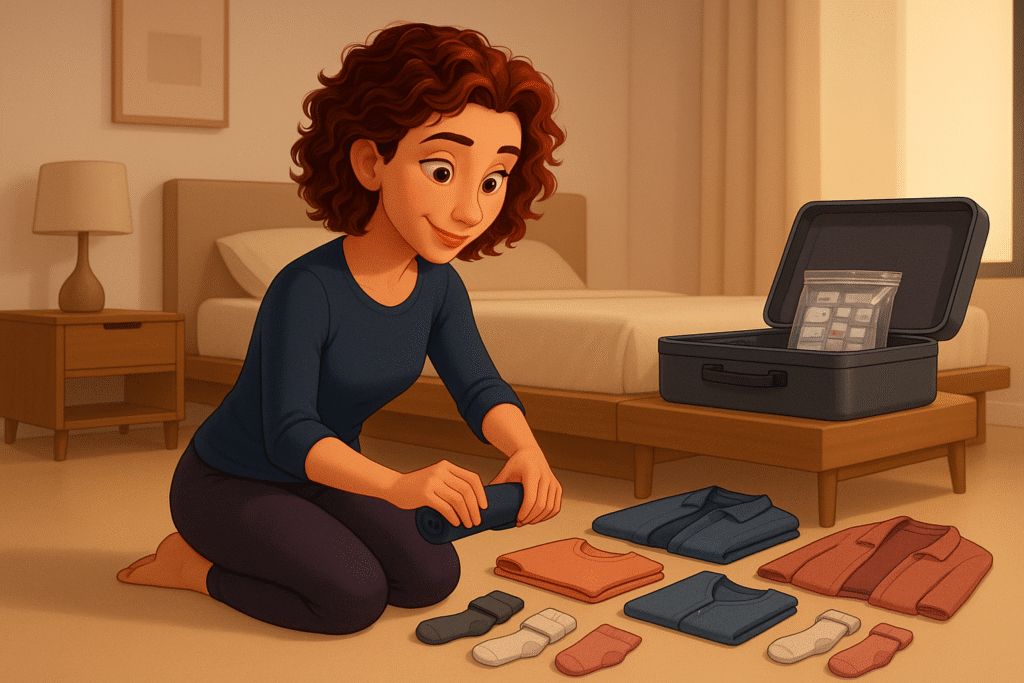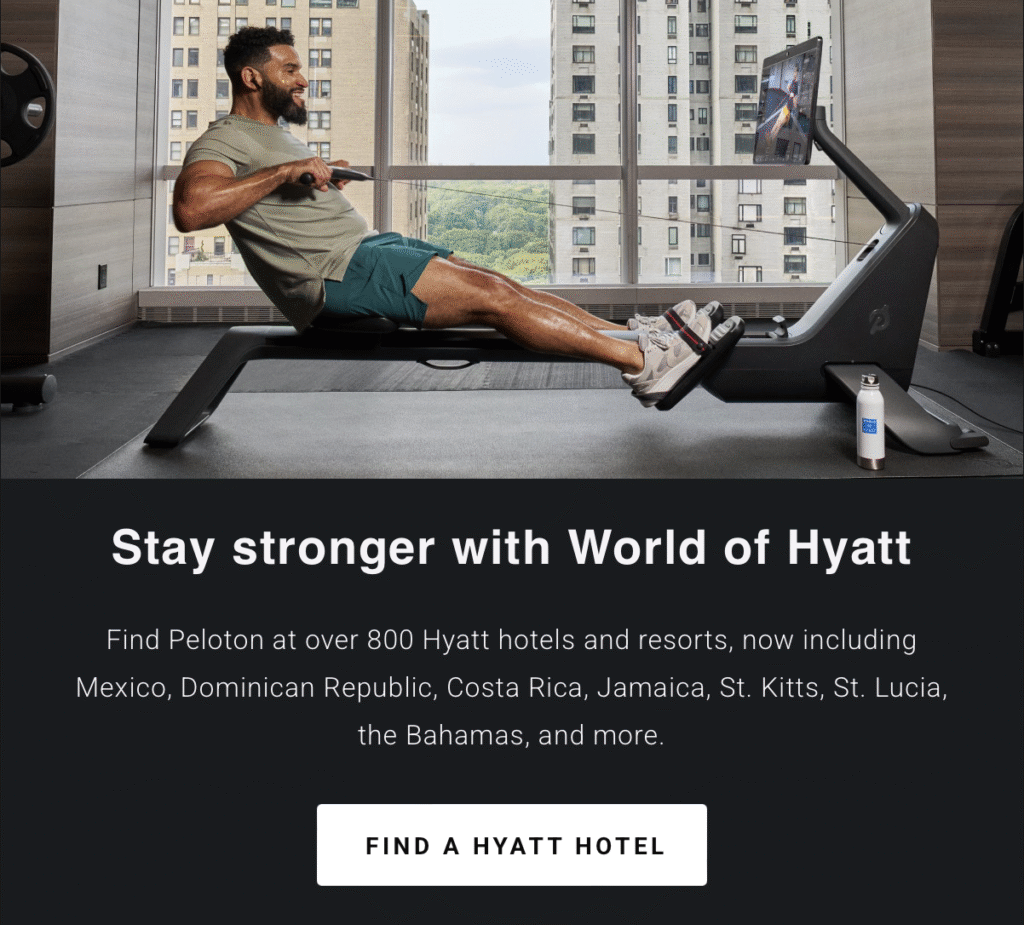
Every time our family travels, I watch my wife perform “the ritual.”
She spreads every piece of clothing across our bedroom floor like a tactical operation.
Socks paired with underwear, shirts matched to jackets, contingency outfits for weather changes we might possibly encounter.
Then comes the pharmacy phase: tiny ziplock bags filled with medication for every conceivable ailment, all labelled and organized into one master bag that could stock a small urgent care clinic.
The rolling technique alone is worthy of its own YouTube channel — each item compressed and positioned with surgical precision.
We’re all perfectly capable of throwing clothes in a suitcase without creating total chaos. (Our youngest is probably the best at that, in all truth.)
But we’ve learned to value my wife’s system tremendously, because it eliminates nearly every possible travel friction point before they happen.
Which brings me to a Peloton–Hyatt partnership email you may have received too.

On the surface, it seems almost silly to me.
I know that Peloton equipment at hotels is notoriously overbooked. You can seldom get a bike or rowing machine during reasonable workout hours, if at all.
Yet the partnership makes perfect psychological sense.
For devoted Peloton users, missing workouts while traveling is bigger than losing fitness.
It feels like identity disruption.
Especially for people who’ve built their daily rhythm around specific instructors, metrics, and routines.
The hotel bikes, rowers and treads let them maintain that identity continuity, even if imperfectly.
I use Peloton’s on-demand routines in the hotel weight room on my phone, despite that I’ve been doing them for many years and could easily run through my regular ones independently.
It’s just that extra familiarity and connection to the ritual.
When you’re on the road, you need every bit of that you can get.
In I Need That, I discuss how successful products become woven into customers’ Coveted Condition — their vision of who they want to be. When products achieve this integration, customers will go to extraordinary lengths to maintain the relationship.
The real genius is little to do with putting branded bikes in a bunch of hotels.
It’s in the odd partnership of an in-home fitness brand with a global hospitality chain, and in recognizing that Peloton’s stickiest customers experience genuine anxiety about routine disruption during travel.
Product Payoff: Nespresso similarly cracked this code years ago by partnering with luxury hotels worldwide. They realized their customers valued a specific morning ritual that defined their day. (And it was the best possible way to introduce non-customers to the easy, high-quality experience.)
When Four Seasons and Ritz-Carlton properties began offering Nespresso machines with the shiny metallic capsules, the aim was to deliver the psychological comfort of a known experience in unfamiliar environments.
The result: significantly higher customer satisfaction scores and increased brand loyalty that extends far beyond the hotel stay.
And an experience upgrade for both brands’ fans.
That’s what a real win-win looks like.
Your next move: Now let’s apply the “suitcase test” to YOUR product. If your best customers were traveling for two weeks, what would they pack or do to maintain their relationship with your brand? What would they miss most about their usual routine?
What breaks (physically OR metaphorically) when they’re away?
Next, identify potential partners who serve those same customers in different contexts.
The goal isn’t limited to distribution.
You want to engineer in the emotional continuity that keeps customers connected to your product regardless of their location.
What product do you absolutely HAVE TO pack when traveling, even if alternatives exist at your destination?
Poke that reply arrow and share which brands have earned suitcase space in YOUR routine.
Or reach out to my team of product experience strategists at Graphos Product.
